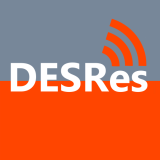|
This course focuses on indoor comfort and the associated physiological concepts. You will learn the cutting edge theory on indoor comfort through lectures from experts in this field. You will then apply these theories in practice, through measurements of the indoor comfort aspects of a real building: visual quality, indoor air quality, acoustical quality and thermal quality. The measurements and the data analysis performed with them will allow you to identify strengths and weaknesses of the existing building design. Following such analysis, you will be able to propose alternative design solutions that improve indoor comfort level. With the use of building performance simulation software, you will then compare the effectiveness of such solutions against the current building performance.
After the course, the students will have a deeper understanding of technical solutions to record and evaluate the thermal and energetic properties of buildings (including the thermal envelope, building loads, services and data on occupant behavior and thermal comfort). In addition, students learn essential data processing skills (including managing, storing, analyzing, interpreting, and presenting a wide range of data).
|


